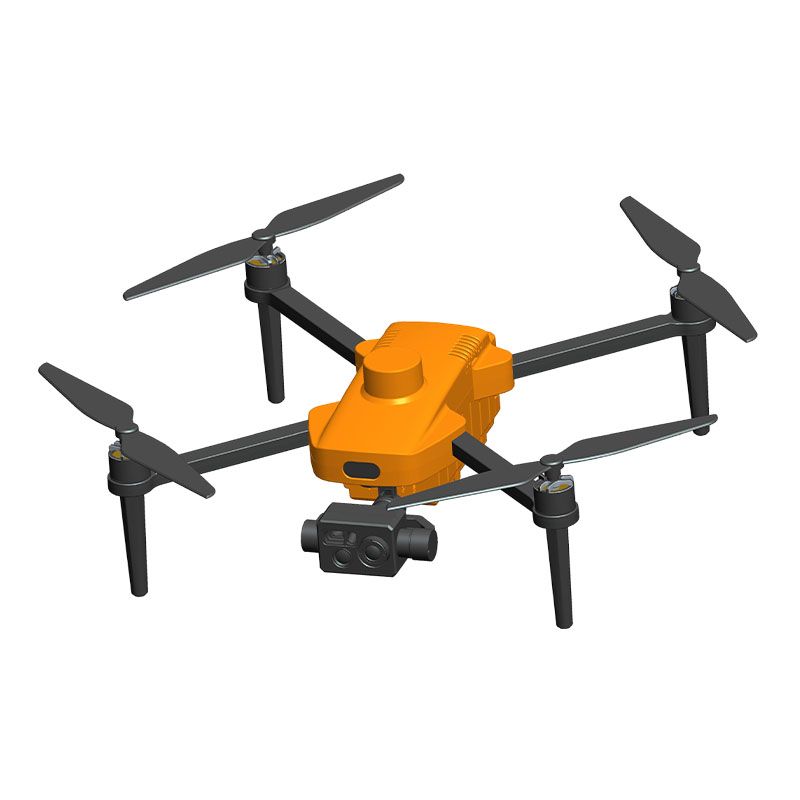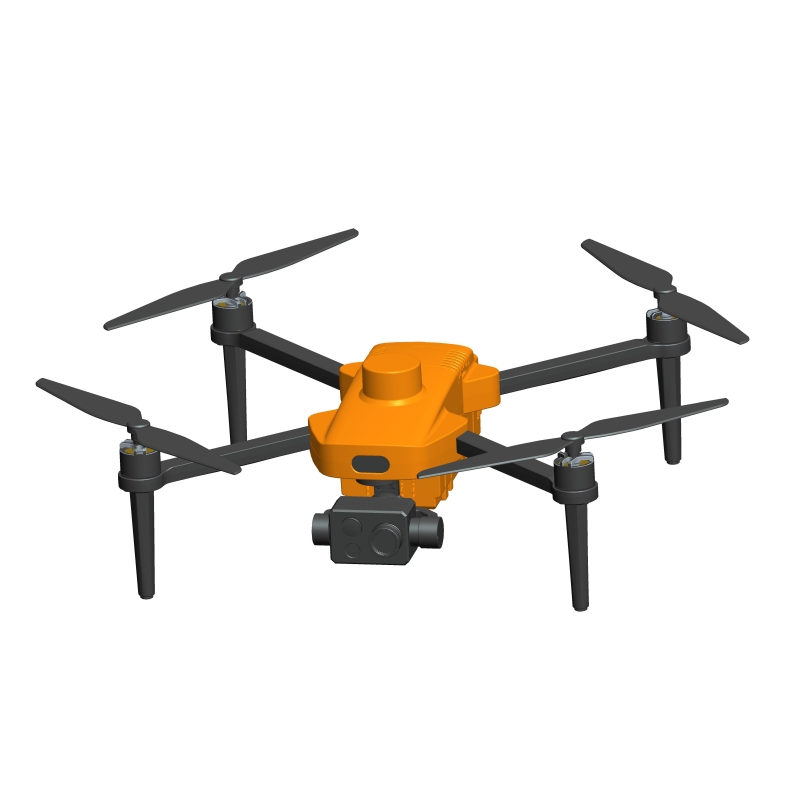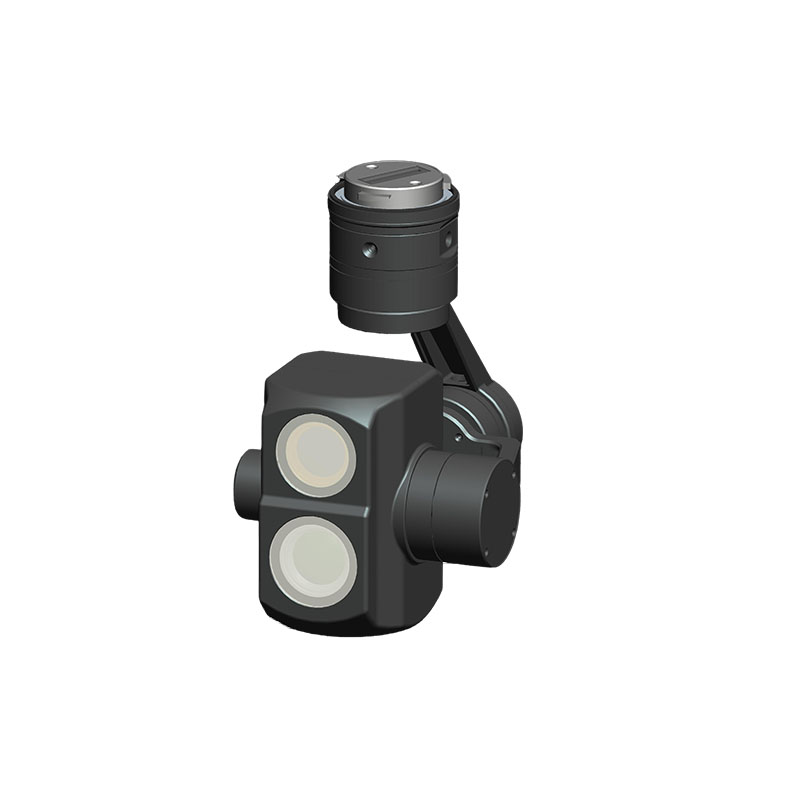How can a three-color light inspection quadcopter UAV ensure accurate target identification and avoid misjudgment under complex lighting conditions?
Release Time : 2025-11-10
In critical tasks such as power line inspection, forest fire prevention, emergency search and rescue, and industrial facility monitoring, three-color light is widely used to identify anomalies, dangerous areas, or target status. Quadcopter UAVs equipped with three-color light recognition systems have become important tools for intelligent inspection due to their flexibility, maneuverability, and high-altitude perspective. However, in complex lighting environments such as strong backlight at sunrise and sunset, low light on cloudy or rainy days, stray light interference at night, or mixed colors from urban neon lights, accurately capturing, interpreting, and avoiding misjudgment by the three-color light inspection quadcopter UAV becomes the core challenge for technological implementation.
1. Hardware Collaboration: Three-Axis Gimbal + Laser Ranging, Locking onto the Target Without Deviation
Accurate identification relies on stable imaging. This UAV is equipped with a high-precision three-axis mechanically stabilized gimbal, which effectively counteracts vibrations and attitude changes during flight, ensuring the camera remains focused on the target area and preventing color information distortion or target loss due to image shake. Meanwhile, the integrated laser ranging module not only acquires the target point distance and 3D coordinates in real time, but also assists the system in judging the target's lighting environment—for example, when the ranging shows the target is in a shadow area, it automatically triggers an image enhancement algorithm to improve details in dark areas. Furthermore, the deep integration of laser ranging data with a single BeiDou + RTK/PPP high-precision navigation system enables the UAV to hover at preset inspection points with centimeter-level positioning accuracy, ensuring consistent observation angle, distance, and altitude for the same device each time, greatly reducing color misreading caused by differences in viewing angle.
2. Intelligent Image Processing: Adaptive White Balance and Multispectral Fusion
Faced with complex lighting, traditional RGB cameras are prone to misinterpreting red as orange or green as yellow-green due to white balance errors. To address this, the image processing system onboard the UAV employs a dynamic white balance correction algorithm, combined with a "standard three-color light chart" database preset by the ground station software, to compare the environmental spectral characteristics in real time during flight and automatically compensate for color shifts. Furthermore, some customized versions support multispectral or narrowband filter imaging. By superimposing filters of specific wavelengths on the visible light channel, ambient stray light interference can be effectively filtered out, retaining only the effective signals of the target's three-color light. This dual filtering mechanism of "optics + algorithm" significantly improves the recognition accuracy in twilight, foggy weather, or strong reflective backgrounds.
3. Software Empowerment: Intelligent Ground Station Analysis and Online Upgrades
The accompanying ground station software is not only the flight control center but also the brain of intelligent recognition. The system can pre-import the three-color light encoding rules of the inspected objects and annotate the recognition results in the real-time video stream. Once an abnormal color combination or flashing frequency is detected, an audible and visual alarm is immediately triggered, and timestamps, GPS coordinates, and encrypted image data are automatically recorded. Thanks to the support for online firmware upgrades, when new interference sources appear on-site causing misjudgments, maintenance personnel can remotely push optimized recognition models through the ground station, completing algorithm iterations without returning the system to the factory, achieving a closed-loop evolution of "getting smarter with use."
4. Environmental Simulation and Redundancy Assurance: Reliable Throughout Takeoff and Return
To cope with extreme operating conditions, this UAV features terrain simulation flight capabilities. A digital elevation model can be loaded into the ground station before the mission to rehearse flight paths and recognition effects under different lighting and occlusion conditions, proactively avoiding high-risk areas. Simultaneously, a low-voltage protection mechanism ensures autonomous return and landing when battery power is insufficient, preventing recognition interruptions or data loss due to sudden power outages. All acquired images are stored using high-strength encryption algorithms such as AES-256 and support secure wireless access to prevent the leakage of sensitive information. The integrated charging and transport box protects the equipment from vibration and moisture during frequent relocations, maintaining the long-term stable performance of the optical sensors.
The three-color light inspection quadcopter UAV goes beyond simply "seeing colors." Through the deep integration of a highly stable gimbal, laser ranging, high-precision navigation, adaptive image algorithms, and an intelligent software platform, it constructs a complete "perception-analysis-decision-feedback" reliability system in complex and ever-changing lighting environments. It makes every flash of red, green, and blue a reliable signal, providing a new paradigm of accurate, efficient, and safe intelligent inspection for key fields such as power, security, and environmental protection.
1. Hardware Collaboration: Three-Axis Gimbal + Laser Ranging, Locking onto the Target Without Deviation
Accurate identification relies on stable imaging. This UAV is equipped with a high-precision three-axis mechanically stabilized gimbal, which effectively counteracts vibrations and attitude changes during flight, ensuring the camera remains focused on the target area and preventing color information distortion or target loss due to image shake. Meanwhile, the integrated laser ranging module not only acquires the target point distance and 3D coordinates in real time, but also assists the system in judging the target's lighting environment—for example, when the ranging shows the target is in a shadow area, it automatically triggers an image enhancement algorithm to improve details in dark areas. Furthermore, the deep integration of laser ranging data with a single BeiDou + RTK/PPP high-precision navigation system enables the UAV to hover at preset inspection points with centimeter-level positioning accuracy, ensuring consistent observation angle, distance, and altitude for the same device each time, greatly reducing color misreading caused by differences in viewing angle.
2. Intelligent Image Processing: Adaptive White Balance and Multispectral Fusion
Faced with complex lighting, traditional RGB cameras are prone to misinterpreting red as orange or green as yellow-green due to white balance errors. To address this, the image processing system onboard the UAV employs a dynamic white balance correction algorithm, combined with a "standard three-color light chart" database preset by the ground station software, to compare the environmental spectral characteristics in real time during flight and automatically compensate for color shifts. Furthermore, some customized versions support multispectral or narrowband filter imaging. By superimposing filters of specific wavelengths on the visible light channel, ambient stray light interference can be effectively filtered out, retaining only the effective signals of the target's three-color light. This dual filtering mechanism of "optics + algorithm" significantly improves the recognition accuracy in twilight, foggy weather, or strong reflective backgrounds.
3. Software Empowerment: Intelligent Ground Station Analysis and Online Upgrades
The accompanying ground station software is not only the flight control center but also the brain of intelligent recognition. The system can pre-import the three-color light encoding rules of the inspected objects and annotate the recognition results in the real-time video stream. Once an abnormal color combination or flashing frequency is detected, an audible and visual alarm is immediately triggered, and timestamps, GPS coordinates, and encrypted image data are automatically recorded. Thanks to the support for online firmware upgrades, when new interference sources appear on-site causing misjudgments, maintenance personnel can remotely push optimized recognition models through the ground station, completing algorithm iterations without returning the system to the factory, achieving a closed-loop evolution of "getting smarter with use."
4. Environmental Simulation and Redundancy Assurance: Reliable Throughout Takeoff and Return
To cope with extreme operating conditions, this UAV features terrain simulation flight capabilities. A digital elevation model can be loaded into the ground station before the mission to rehearse flight paths and recognition effects under different lighting and occlusion conditions, proactively avoiding high-risk areas. Simultaneously, a low-voltage protection mechanism ensures autonomous return and landing when battery power is insufficient, preventing recognition interruptions or data loss due to sudden power outages. All acquired images are stored using high-strength encryption algorithms such as AES-256 and support secure wireless access to prevent the leakage of sensitive information. The integrated charging and transport box protects the equipment from vibration and moisture during frequent relocations, maintaining the long-term stable performance of the optical sensors.
The three-color light inspection quadcopter UAV goes beyond simply "seeing colors." Through the deep integration of a highly stable gimbal, laser ranging, high-precision navigation, adaptive image algorithms, and an intelligent software platform, it constructs a complete "perception-analysis-decision-feedback" reliability system in complex and ever-changing lighting environments. It makes every flash of red, green, and blue a reliable signal, providing a new paradigm of accurate, efficient, and safe intelligent inspection for key fields such as power, security, and environmental protection.







